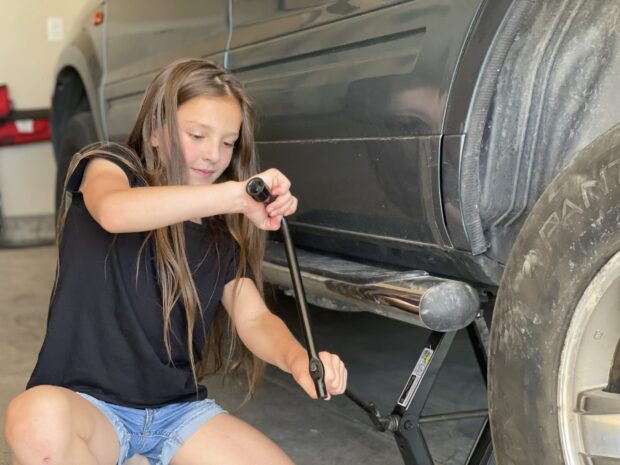It’s July, and my wife and I are already scrambling to keep our kids busy during summer break. They’re loaded, life jackets and all, in the car for a trip to the local pool as I write this.
We’ve laced June, July and August with activities in COVID’s wake: swimming, camping, traveling, learning.
That last one’s debatable. We’ve learned over the years that our homeschooling game is less than so-so. Last week was a reminder, after this former high school English teacher tried to turn a flat-tire experience into a teaching opportunity for three little girls.
I lost our 6-year-old at lug nuts. Our 10-year-old said she’d have her husband “fix the flats” someday.

OK.
It all reminded me of a reality parents and educators face every year, a reality almost as old as the wheel itself: the summer “slide.”
I’m not talking about the water slide at the pool or — my fav — sliders from the grill. I’m talking about how your kid’s teacher likely refers to summer learning loss: a three-month backslide, the infamous summer learning slide.
It’s real, and it can set kids back notably ahead of every new school year. This 2020 study found that three months out of the classroom, on average, ate into about 20% of elementary students’ school-year gains in reading and 27% in math.
And time away from a teacher can disproportionally impact elementary students who live in poverty, who often wade through summer with fewer resources.
I’m not saying teachers and kids shouldn’t take a break every summer. A teacher I used to work with wasn’t shy about the three reasons he joined the profession. He’d spout them off over school lunch: “June, July and August.” I’m just saying that some noticeable learning loss happens when kids haul off for summer, and that parents can do things about it.
So what should parents do? It’s hard to say, since every family is different, with different amounts of time and learning resources. The Johnsons, where Mom and Dad both work full-time, might have less time and fewer resources for reading, and only a handful of opportunities to leave home for activities.
Mickey Mouse and Youtube fill in where Dr. Seuss and Charlotte’s Web could have been.
Meanwhile, the Thompsons, who enjoy hefty salaries and flexible work schedules, have the money and time for endless trips to the museum and library, outdoor activities and that pricey summer camp in the mountains.
Every family’s different, but there are resources and pointers anyone can tap into to slow the slide. This Scholastic.com article lists ideas pretty much anyone could use, from letting your kids have say in their own summer reading to implementing games and puzzles into family play time to simply getting out of the house.
Scroll down here for a Scholastic.com’s list of popular summer kids books, broken down by age. And fortunately, Idaho’s a great place for getting the kids outside.
Local libraries are also a haven for summer learning programs. Our library does story time every Wednesday at 10 a.m. It’s all on its website, right next to the summer reading program, which bounces between kid-friendly themes. Last month’s theme: the ocean. Nothin’ fishy, just a whale of a good time.
Or you could always teach them how to change a tire.
